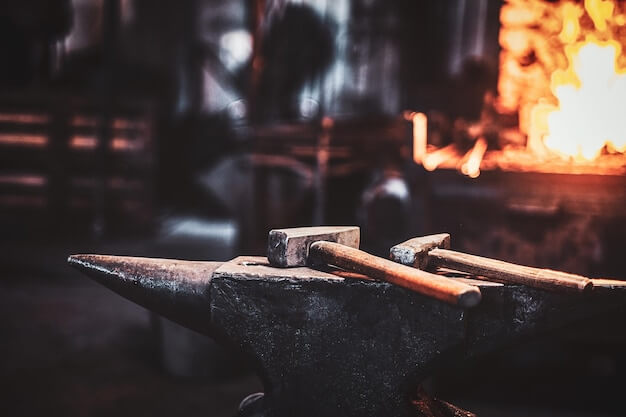Introduction to Electrical Discharge Machining (EDM)
Electrical Discharge Machining, commonly referred to as EDM, is a non-traditional machining method that employs electrical discharges or sparks to remove material from a workpiece. The fundamental principle behind EDM involves creating an electrical spark between an electrode and the workpiece which is submerged in dielectric fluid. This precisely controlled spark produces intense heat exceeding 8,000 degrees Celsius, capable of melting almost any conductive material. As a result, microscopic particles are eroded away from the workpiece surface, shaping it into the desired form. The process excels in manufacturing intricate parts where conventional cutting tools would struggle due to hardness or complexity.
Detailed Process of EDM
The setup involved in Electrical Discharge Machining (EDM) is critical and begins with clamping the workpiece to be shaped into a machine vice or fixture. An electrode, often made of conductive materials like copper or graphite, acts as a tool that creates the desired form on the workpiece through electrical discharge. The step-by-step breakdown of the EDM process starts with the submersion of both the electrode and the workpiece in dielectric fluid, which functions as an insulator until enough voltage between them causes ionization. As the electrode moves towards the workpiece, controlled sparks jump across the gap, eroding the material in the predefined pattern. This repeated sparking action continues while the dielectric fluid constantly flushes away the microscopic particles produced from erosion, maintaining a stable machining environment and preventing excessive heat buildup that could damage the workpiece or the electrode.
Benefits of Using EDM
The utilization of Electrical Discharge Machining (EDM) brings numerous advantages, notably its unparalleled precision and the capacity to effortlessly shape complex geometries that may be challenging or impossible through conventional machining methods. This advanced process is highly adaptable, accommodating a vast range of conductive materials, from hard metals like titanium to delicate alloys, without compromising detail or finish quality. Furthermore, since EDM is non-contact, it imparts minimal mechanical stresses on workpieces, reducing the chances of distortion or warping during the fabrication of intricate parts – an essential benefit in producing components demanding high dimensional fidelity.
Multidisciplinary Applications of EDM
Electrical Discharge Machining (EDM) has established itself as a versatile tool across various industries due to its precision and capability to machine complex shapes. In the medical industry, for example, EDM is instrumental in creating intricately designed surgical components such as custom orthopedic implants that must fit unique patient anatomy. Aerospace engineers rely on EDM for manufacturing critical turbine blades with high dimensional accuracy and superior surface finish, essential for engine performance and safety. Meanwhile, the automotive sector leverages EDM for producing highly detailed injection molds used in the mass production of plastic parts. These molds require precise features and textures, which EDM can achieve consistently, thereby ensuring quality control in automotive assembly lines.
Comparing EDM With Other Machining Processes
In comparison to conventional machining methods, Electrical Discharge Machining (EDM) notably differs as it does not require direct contact between the tool and the workpiece. Traditional techniques, such as milling, turning, or drilling, involve cutting forces that can cause distortion in delicate parts. Conversely, EDM uses electrical sparks to erode material, offering precision for intricate shapes or hard-to-machine materials like titanium or Inconel. A clear advantage of EDM emerges in situations requiring complex geometries, tight tolerances, or where the material’s hardness would make traditional machining impractical and expensive due to rapid tool wear. For example, EDM is highly favored in mold-making when designing precise cavities within hardened steel.
Key Considerations When Utilizing EDM
Selecting the appropriate materials for the Electrical Discharge Machining process is critical, as not all metals can withstand the thermal stresses involved. Materials like hardened steel, titanium, alloyed aluminum, and superalloys that exhibit high temperature resistance and electrical conductivity are preferred choices. Understanding the surface finish and tolerance capabilities of EDM is equally important. This machining method can achieve fine finishes and intricate details with tolerances within microns. However, it’s essential to take into account that the finished surface may contain a recast layer from the melting and solidification of the metal, which could affect the material properties. Considering these factors ensures optimal outcomes in applications ranging from aerospace components to medical devices.
Advances in EDM Technology
The continual advancements in Electrical Discharge Machining (EDM) technology have significantly bolstered its efficiency and accuracy, marking a noteworthy shift in the manufacturing landscape. Modern developments include refined control systems capable of modulating the electrical discharges for more precise material removal, resulting in improved tolerances and surface finishes. Additionally, the integration of automation, driven by sophisticated software algorithms, has enabled more consistent and uninterrupted production runs. These software enhancements provide real-time monitoring and adjustments during the EDM process, increasing repeatability and reducing human error. The synergy of precision engineering and computational intelligence in today’s EDM processes heralds a new era of complex part fabrication where intricacy is achieved with minimal waste and energy expenditure.
Other Articles You Might Enjoy
- Electrical Discharge Machining: Exploring Construction, Applications, Pros, and Cons
Electrical discharge machining (EDM), also known as spark machining, is a unique process that sets it apart from conventional machining methods like CNC turning and milling. Unlike those processes that…
- Applications and Advantages of Bronze CNC Machining
1. Introduction: The Enduring Allure of Bronze in CNC Machining In this opening section, we explore the timeless appeal of bronze as a material for CNC machining. From its rich…
- Understanding the Bead Blasting Process in CNC Machining(milling machining Maud)
Bead blasting is an essential process in the CNC machining world, known for offering a refined finish to various surfaces. This method uses pressure or suction to propel tiny glass…






